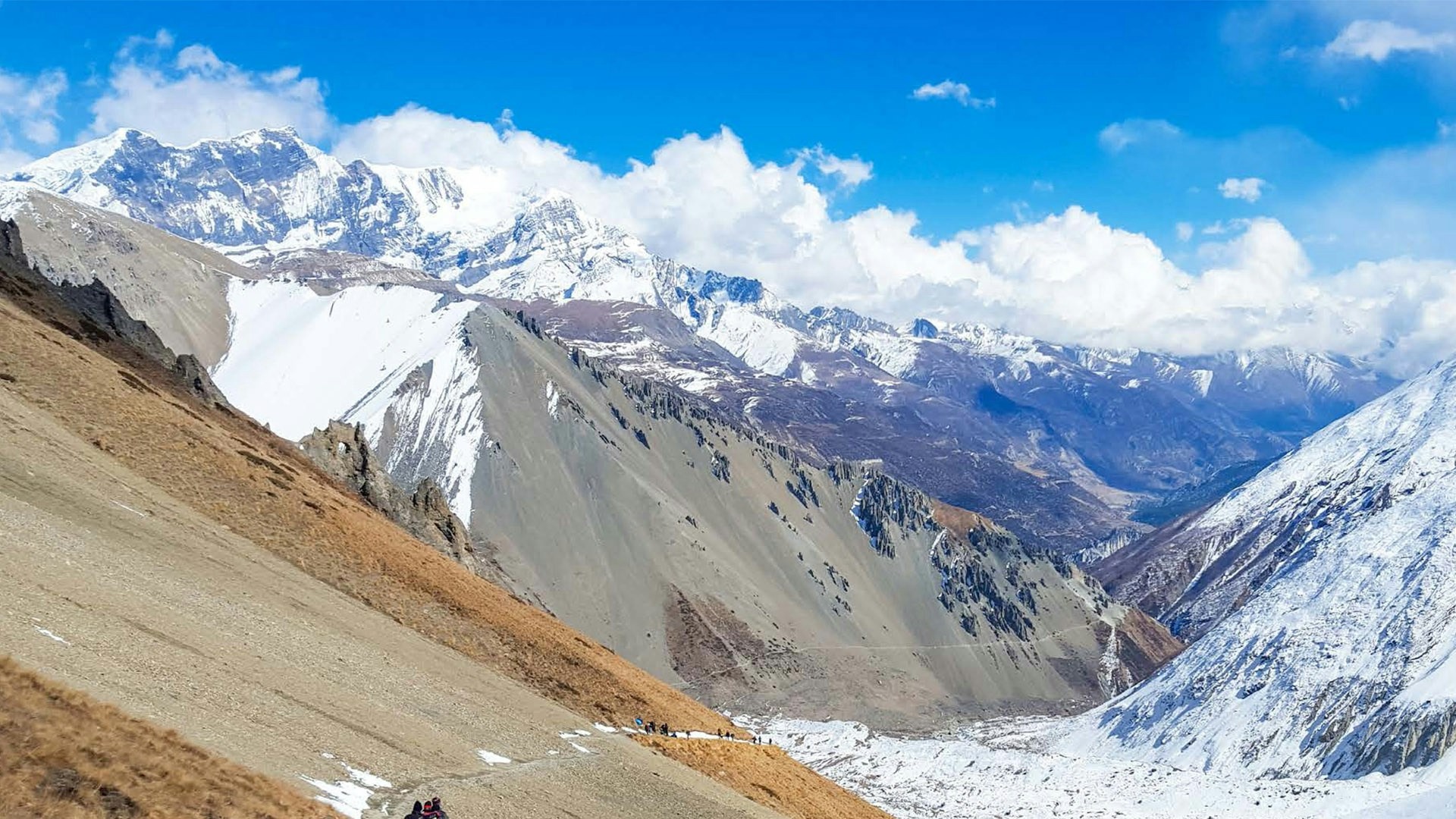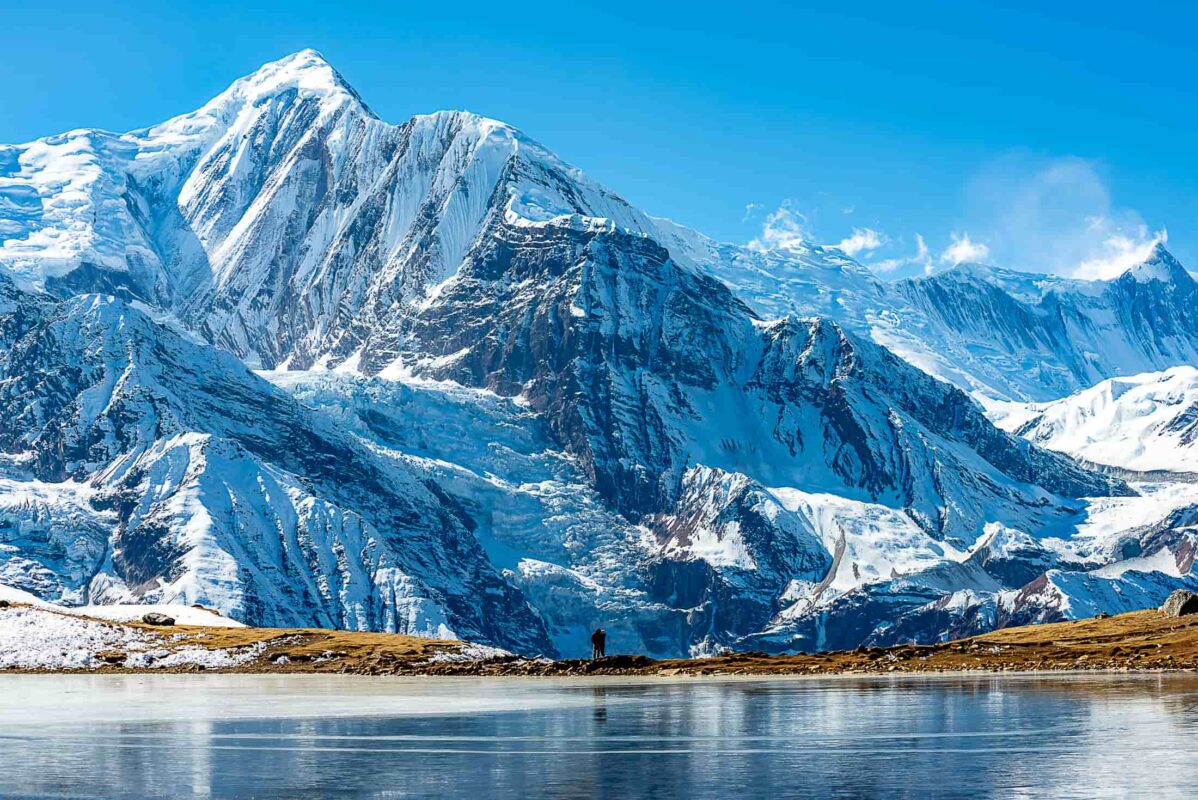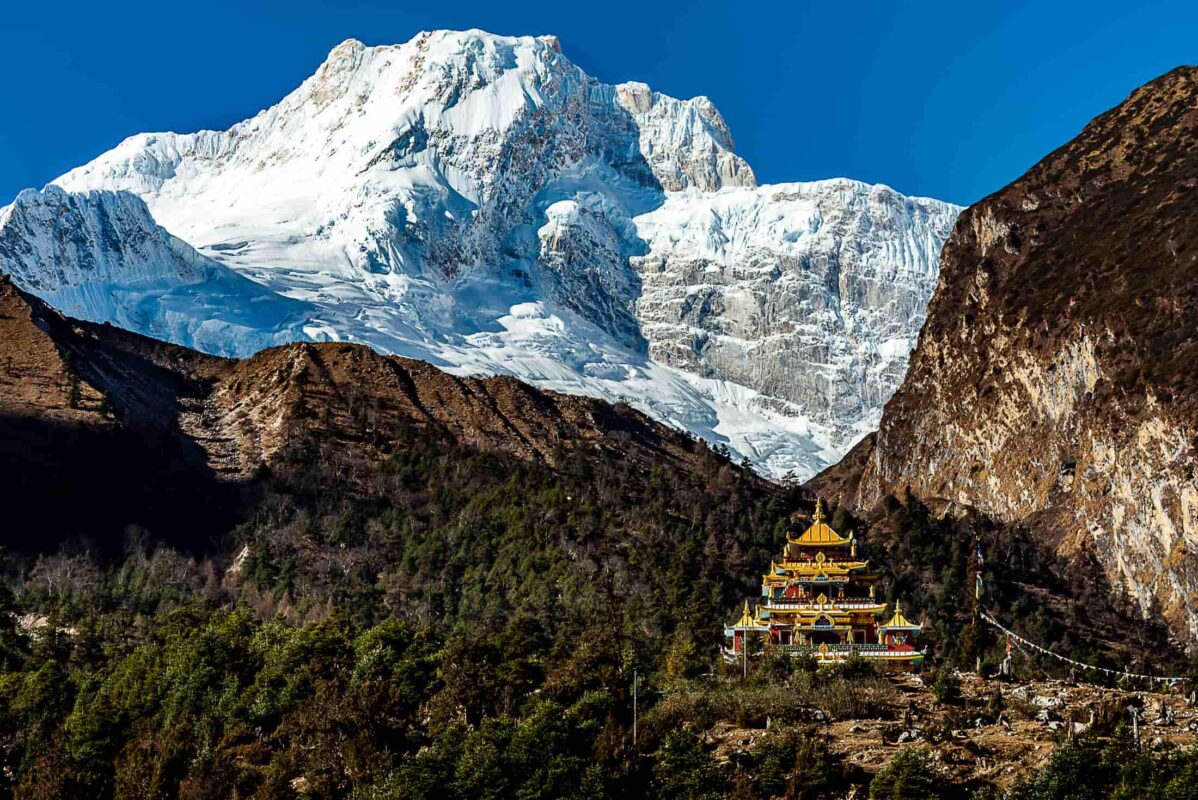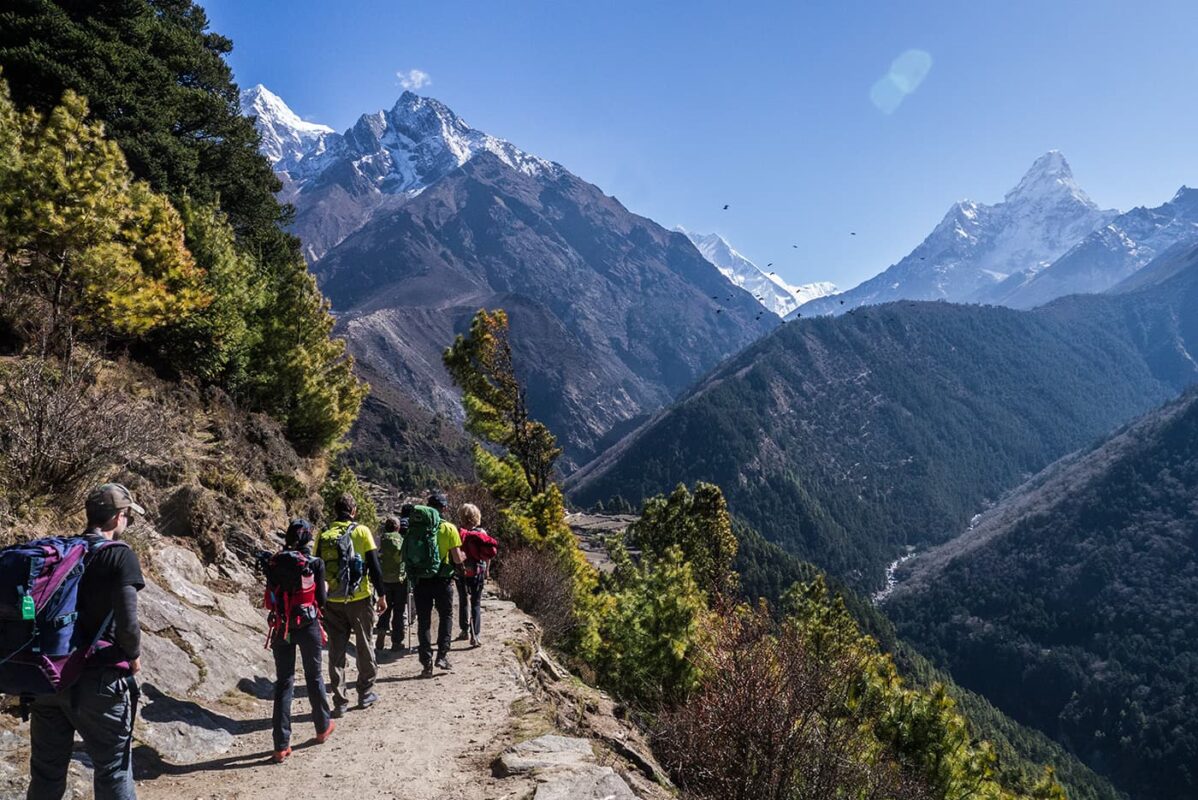The trails of Nepal
Among the big list of trails, the Everest Base Camp, Annapurna Circuit, Manaslu Circuit, and Langtang Trek are among the most famous hiking trails in Nepal. There’s a great infrastructure for booking porters, guides, and sherpas and sleeping in one of the many lodges alongside the trail. Most of the days you’ll eat dahl bat, a local healthy meal with rice, beans, vegetables, and papadam. Looking for a longer trek? The Great Himalayan Trail is a thru-hike the entire length of Nepal’s mountainous regions for very experienced hikers.
The Everest Base Camp trek is a classic and a great mix of scenery, with of course, the famous Mount Everest, the world’s highest mountain, in sight. It’s a challenging trail, following the footsteps of legendary mountaineers. But it’s more than just a trail. It’s an experience through the sherpa culture, with monasteries and traditional villages alongside the route, which will give you a small glimpse into the lives of the mountain communities.
The Annapurna Circuit is another popular trek, looping for around 14-20 days, depending on your schedule, and is well known for its diverse landscapes, taking you all the way from subtropical forests to alpine mountain passes such as the Thorung La Pass at 5416m above sea level, with views of the Annapurna peaks.
The Manaslu Circuit is a more secluded trail in a former ancient kingdom. It loops around the world’s eighth-highest mountain, showing off views of glaciers and high-altitude peaks. The trek gives you a feeling for the communities and traditions of the Tibetan and Gurung communities.
The Langtang Valley Trek is the most accessible of the trails from Katmandu and goes through forests, up to pastures where you’ll see yaks grazing, and into the heart of the Langtang National Park. The people from the Langtang Valley are more than happy to host you in their guest houses.
Monsoons and high altitude sickness
Planning a successful hike in Nepal relies on you taking into consideration the best time of year to visit, which generally falls into two main seasons: pre-monsoon (March to May) and post-monsoon (September to November). These periods have the clearest skies and the most stable weather conditions for hiking. It’s also important to consider how your trek can support the local economy. Staying in local teahouses, hiring local guides and porters, and purchasing local products all contribute to the sustainable development of these mountain communities. Be aware of high altitude sickness and plan time to acclimatize on your trip before you start hiking. If you get the symptoms of high altitude sickness, there’s only one cure: go as down as soon as possible.








